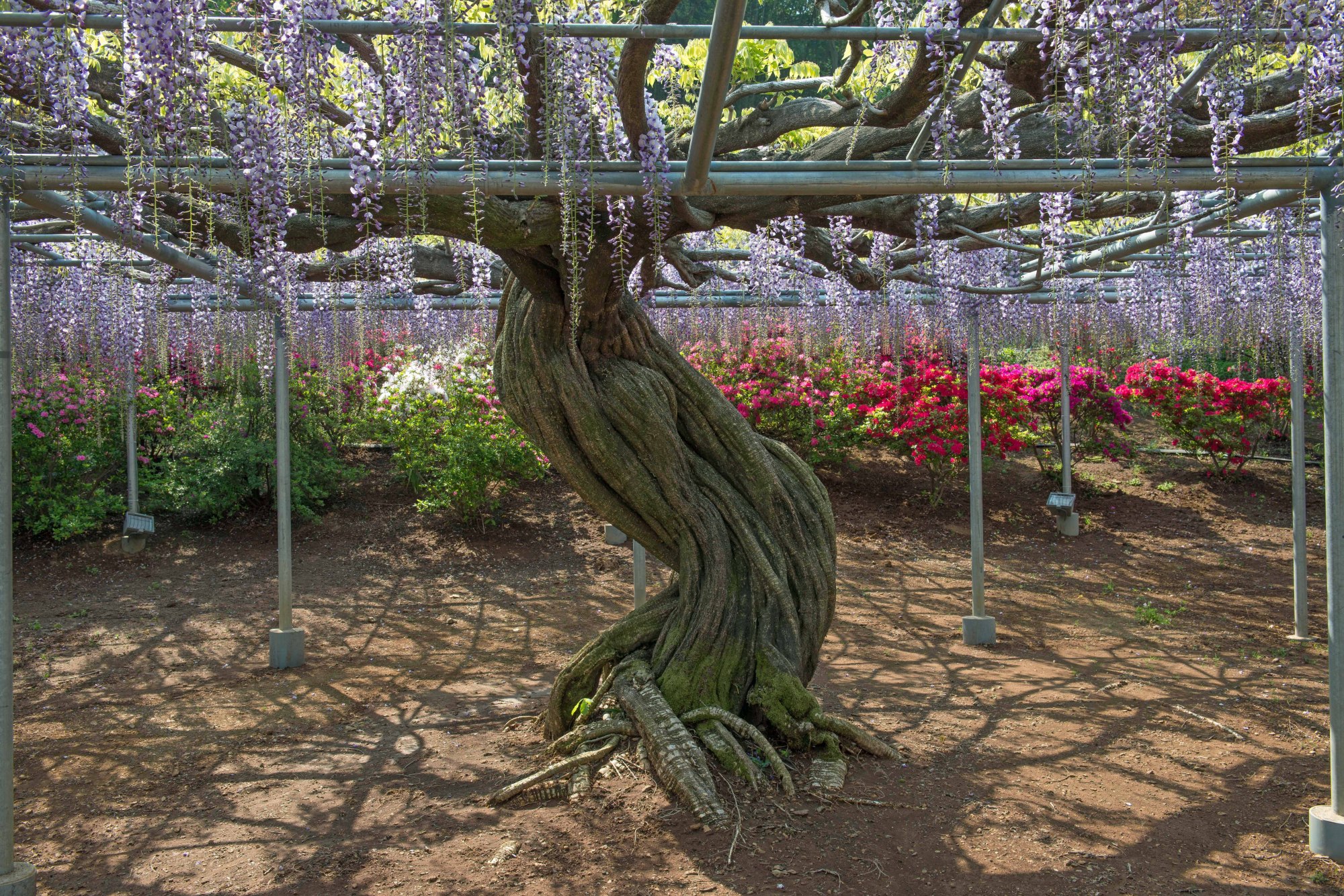Flitting between spring rains and warm sun, April is one of the country's most fecund months. If the cherry blossoms dominate the first half of the month, it is the fragrant racemes of wisteria that entrap the senses in mid-April, running their course into mid- to late May. The flower — known as fuji in Japanese — has a firm place in the Japanese heart, cultivated to no small extent by writers, who have made much of the vine.
These gracious purple and lavender pendants have been lauded since the Nara Period (710-794), mention of them appearing in the "Manyoshu," the oldest existing anthology of Japanese poems. Murasaki Shikibu has a good deal to say about the flower in her 11th-century novel, "The Tale of Genji." Shikibu served as lady-in-waiting to Fujiwara no Shoshi who, during her lifetime, became known as "Fujitsubo" for the lush trellises of wisteria cultivated in her inner garden. Also in Shikibu's time, the flower was planted in the courtyards of ancient Kyoto's inner palace, where power rested with the Fujiwara family, whose name translates to "wisteria field."
More recently, Edith Shiffert, a longtime habitue of Kyoto, wrote a short poem on the subject: "That color purple/Draped from treetops on mountains/The wisteria!" Shiffert was writing about wild wisteria, a hardy varietal that can grow in harsh conditions, its roots and bark said to have medicinal qualities.



